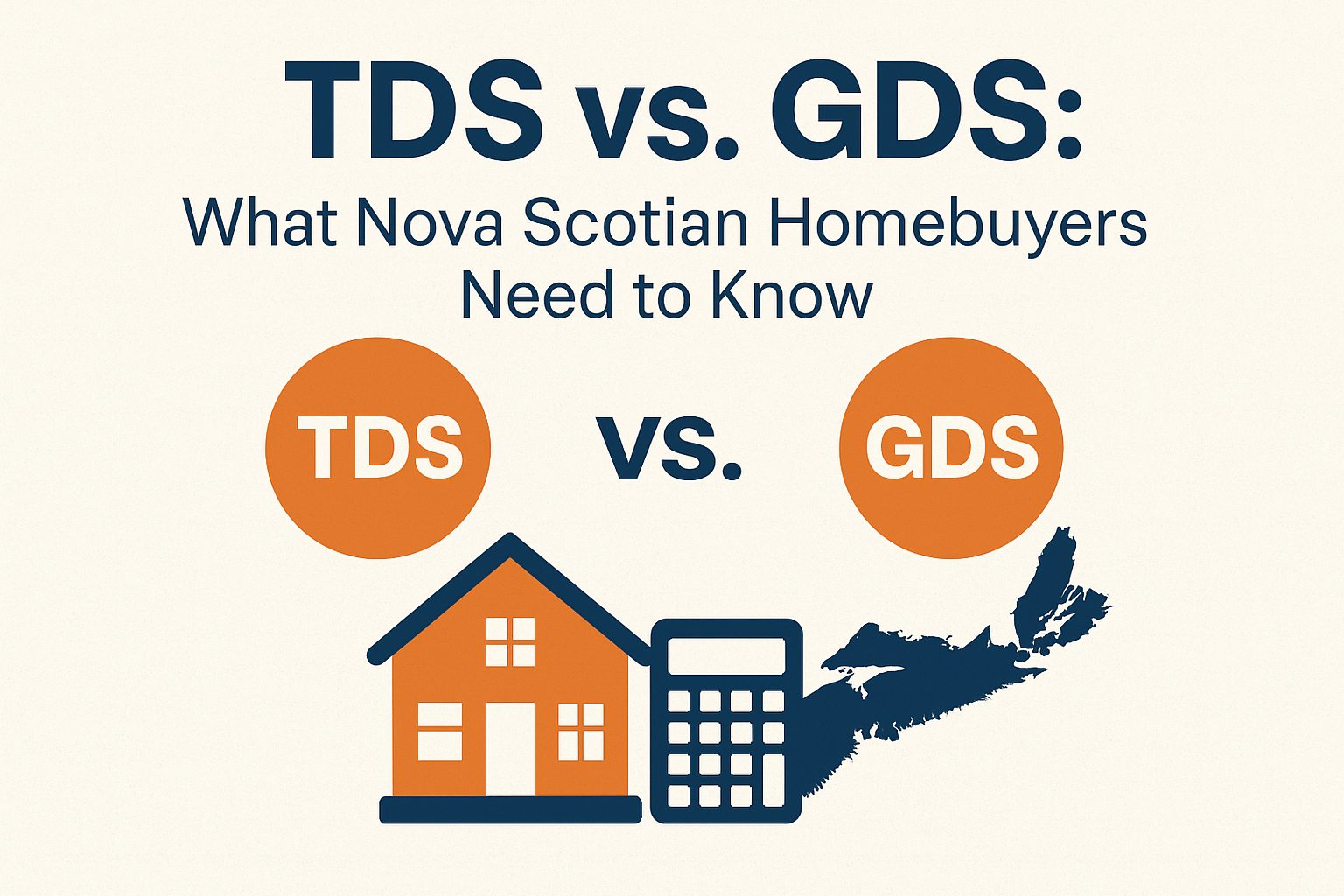GDS vs TDS Ratios: Your Complete Guide to Canadian Mortgage Qualification
Planning to buy a home in Canada? There’s a good chance you’ve heard mortgage brokers and lenders throw around terms like “GDS” and “TDS” without much explanation. These debt service ratios aren’t just industry jargon—they’re the gatekeepers to your mortgage approval and can significantly impact the interest rate you’ll pay.
Whether you’re a first-time homebuyer in Toronto or looking to upgrade your family home in Vancouver, understanding these ratios will put you in control of your mortgage journey. Let’s break down everything you need to know about GDS and TDS ratios in plain English.
Understanding the GDS Ratio: Your Housing Affordability Benchmark
Think of your Gross Debt Service (GDS) ratio as your housing budget health check. This calculation tells lenders—and you—whether your housing costs fit comfortably within your income.
Here’s what counts toward your GDS ratio:
- Your monthly mortgage payment (both principal and interest portions)
- Monthly property taxes
- Monthly heating expenses
- Half of any condo fees or maintenance costs
The math is straightforward: add up these housing expenses, divide by your gross monthly income, and multiply by 100 for your percentage.
The magic number? Canadian lenders typically want to see your GDS ratio at 39% or below. This means no more than 39 cents of every dollar you earn should go toward housing costs.
But here’s an insider tip: while 39% is the ceiling, aiming for 32-35% puts you in prime lending territory with access to the best rates and most flexible terms.
Decoding the TDS Ratio: Your Complete Debt Picture
Your Total Debt Service (TDS) ratio takes the full financial snapshot. It includes everything from your GDS calculation plus all your other monthly debt obligations.
Beyond housing costs, TDS factors in:
- Credit card minimum payments
- Car loan payments
- Student loan obligations
- Personal lines of credit
- Child or spousal support payments
- Any other recurring debt payments
The standard benchmark sits at 44% of your gross income, but smart borrowers target 40-42% to maximize their options and negotiating power.
Why These Ratios Control Your Mortgage Destiny
Canadian lenders use GDS and TDS ratios as risk assessment tools. They want confidence that you can handle mortgage payments alongside your other financial responsibilities without defaulting.
When Your Ratios Work Against You
High GDS ratio consequences:
- Reduced borrowing capacity
- Requirements for larger down payments
- Limited property price range
- Fewer lender options
Elevated TDS ratio impact:
- Potential mortgage rejection
- Higher interest rates if approved
- Mandatory debt reduction before qualification
- Alternative lender requirements with premium rates
The Sweet Spot for Canadian Borrowers
Landing in the “excellent” ratio range opens doors to:
- Prime lending rates (often 0.5-1% lower than alternative options)
- Multiple lender competition for your business
- Flexible mortgage terms and features
- Faster approval processes
Strategic Moves to Optimize Your Debt Ratios
Immediate Actions for Ratio Improvement
Tackle High-Interest Debt First Credit cards carrying 19-29% interest rates drag down your TDS ratio more than any other debt type. Focus your extra payments here for maximum impact.
Strategic Down Payment Planning Every additional dollar in your down payment reduces your required mortgage amount. A $20,000 increase in down payment might lower your monthly mortgage payment by $100-150, directly improving your GDS ratio.
Income Documentation Excellence Many Canadian borrowers underestimate their qualifying income. Include all verifiable sources: part-time work, rental income from basement suites, consistent overtime, and commission income with a two-year history.
Long-Term Ratio Management
The Debt Consolidation Decision Consolidating multiple debts can improve your TDS ratio, but timing matters. Complete consolidation at least six months before your mortgage application to establish a payment history.
Property Selection Strategy Your dream home might push your ratios over acceptable limits. Consider starting with a smaller property or less expensive area to build equity, then upgrade when your income grows or debt decreases.
Real Canadian Scenarios: Ratios in Action
Scenario 1: The Toronto Professional
Annual Income: $95,000 ($7,917 monthly gross) Target Home Price: $650,000 with 10% down Monthly Mortgage Payment: $2,650 Property Taxes: $450 Heating: $120 Existing Debts: $380
GDS Calculation: ($2,650 + $450 + $120) ÷ $7,917 = 40.7% ⚠️ TDS Calculation: ($3,220 + $380) ÷ $7,917 = 45.5% ✗
Solution: Increase down payment to 15% or target a $600,000 property to bring ratios within acceptable ranges.
Scenario 2: The Calgary Family
Annual Income: $120,000 ($10,000 monthly gross) Target Home Price: $500,000 with 20% down Monthly Mortgage Payment: $1,850 Property Taxes: $280 Heating: $180 Existing Debts: $650
GDS Calculation: ($1,850 + $280 + $180) ÷ $10,000 = 23.1% ✓ TDS Calculation: ($2,310 + $650) ÷ $10,000 = 29.6% ✓
Result: Excellent position for prime lending with multiple lender options and favorable rates.
Regional Considerations Across Canada
Higher Cost Markets (Toronto, Vancouver, Victoria)
In expensive markets, many borrowers bump against ratio limits. Consider:
- Extended amortization periods (25-30 years) to reduce monthly payments
- Joint applications with spouse or partner
- First-time homebuyer programs that offer ratio flexibility
More Affordable Markets (Prairies, Maritimes, Smaller Cities)
Lower property costs often mean better ratio positioning, but income verification becomes crucial. Ensure steady employment documentation in resource-dependent economies.
Working with Canadian Lenders: What to Expect
Big Banks vs. Credit Unions vs. Alternative Lenders
Major Banks stick closely to standard ratio guidelines but offer competitive rates for qualified borrowers.
Credit Unions may provide more flexibility on ratios, especially for members with long-standing relationships.
Alternative Lenders work with higher ratios but charge premium rates (often 2-4% above prime).
The Pre-Approval Advantage
Getting pre-approved based on your current ratios provides:
- Clear budget parameters for house hunting
- Negotiating strength with sellers
- Rate protection during your search period
- Identification of ratio issues before you find your dream home
Your Next Steps to Mortgage Success
Start by calculating your current GDS and TDS ratios using your actual income and expenses. If you’re within the preferred ranges, you’re ready to begin serious house hunting. If your ratios need work, create an action plan with specific debt reduction targets and timelines.
Remember: these ratios aren’t just hurdles to clear—they’re guardrails protecting your financial future. A mortgage payment that fits comfortably within these guidelines typically remains manageable even if life throws unexpected challenges your way.
Bottom Line for Canadian Homebuyers: Master your GDS and TDS ratios before you start shopping for homes. This preparation will save you time, money, and disappointment while positioning you for the best possible mortgage terms in the Canadian market.

 Facebook
Facebook
 X
X
 Pinterest
Pinterest
 Copy Link
Copy Link

